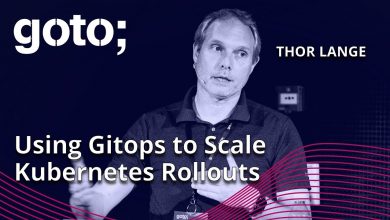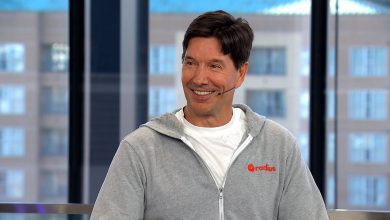Cloud Native DevOps Explained
Cloud Native Computing takes the principles of DevOps a step further by leveraging cloud technologies and architectures to enable organizations to build and deploy applications at scale.
 Cloud Native Computing is an approach to building and running applications that fully takes advantage of the cloud computing model.
Cloud Native Computing is an approach to building and running applications that fully takes advantage of the cloud computing model.
It involves developing applications as a collection of loosely coupled and independently deployable microservices, packaged in containers, and dynamically orchestrated to optimize resource utilization.
In today’s fast-paced digital landscape, organizations are constantly seeking ways to deliver software applications more efficiently and reliably. This has led to the rise of DevOps, a set of practices that combines software development (Dev) and IT operations (Ops) to streamline the software delivery process.
Cloud Native Computing
Cloud Native Computing takes the principles of DevOps a step further by leveraging cloud technologies and architectures to enable organizations to build and deploy applications at scale. It embraces containerization, microservices, and dynamic orchestration to achieve greater agility, scalability, and resilience.
- Containerization: Containerization is a key aspect of Cloud Native Computing. It involves packaging applications and their dependencies into lightweight, self-contained units called containers. Containers provide a consistent and isolated runtime environment, ensuring that applications run reliably across different computing environments.
- Microservices: Microservices architecture is another fundamental concept in Cloud Native Computing. Instead of building monolithic applications, organizations break down their applications into smaller, loosely coupled services that can be developed, deployed, and scaled independently. This approach enables faster development cycles, easier maintenance, and better fault isolation.
- Dynamic Orchestration: Dynamic orchestration is the practice of automatically managing and scaling the deployment of containerized applications. It involves using container orchestration platforms like Kubernetes to schedule and distribute containers across a cluster of machines, ensuring optimal resource utilization and high availability.
Benefits of Cloud Native Computing
Cloud Native Computing offers several benefits that contribute to improved DevOps performance:
- Scalability: By leveraging containerization and dynamic orchestration, organizations can easily scale their applications up or down based on demand. This elasticity allows for efficient resource utilization and cost optimization.
- Resilience: Cloud Native Computing promotes fault tolerance and resilience by designing applications as a collection of independent microservices. If one microservice fails, it does not bring down the entire application, ensuring high availability and minimizing downtime.
- Agility: The modular nature of microservices enables faster development cycles and easier deployment. Developers can work on individual services independently, allowing for parallel development and faster time-to-market.
- Portability: Containerization ensures that applications and their dependencies are packaged together, making them highly portable across different computing environments. This portability reduces deployment friction and enables organizations to adopt multi-cloud or hybrid cloud strategies.
Improving DevOps Performance
Cloud Native Computing significantly improves DevOps performance in several ways:
- Streamlined Deployment: With containerization and dynamic orchestration, deploying applications becomes more automated and repeatable. This reduces the risk of errors and speeds up the deployment process.
- Enhanced Collaboration: Cloud Native Computing encourages closer collaboration between development and operations teams. By adopting shared tools and practices, such as infrastructure as code and continuous integration/continuous deployment (CI/CD), teams can work together more efficiently.
- Efficient Resource Utilization: Dynamic orchestration platforms like Kubernetes optimize resource allocation, ensuring that applications are deployed on the most suitable machines. This leads to better resource utilization and cost savings.
- Improved Monitoring and Observability: Cloud Native Computing provides robust monitoring and observability capabilities. With tools like Prometheus and Grafana, organizations can gain deep insights into the performance and health of their applications, enabling proactive issue detection and resolution.
Conclusion
Cloud Native Computing is revolutionizing the way organizations build and deploy applications. By embracing containerization, microservices, and dynamic orchestration, organizations can achieve greater agility, scalability, and resilience.
This, in turn, improves DevOps performance by streamlining deployment, enhancing collaboration, optimizing resource utilization, and providing better monitoring capabilities. As the cloud computing landscape continues to evolve, Cloud Native Computing will play an increasingly vital role in enabling organizations to stay competitive in the digital age.



